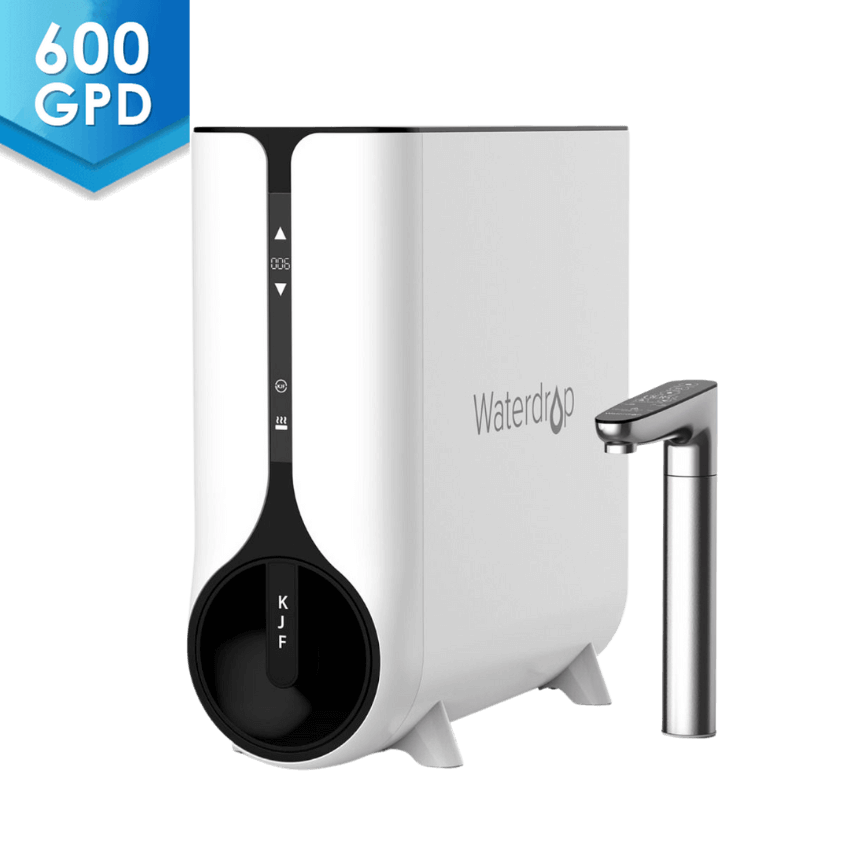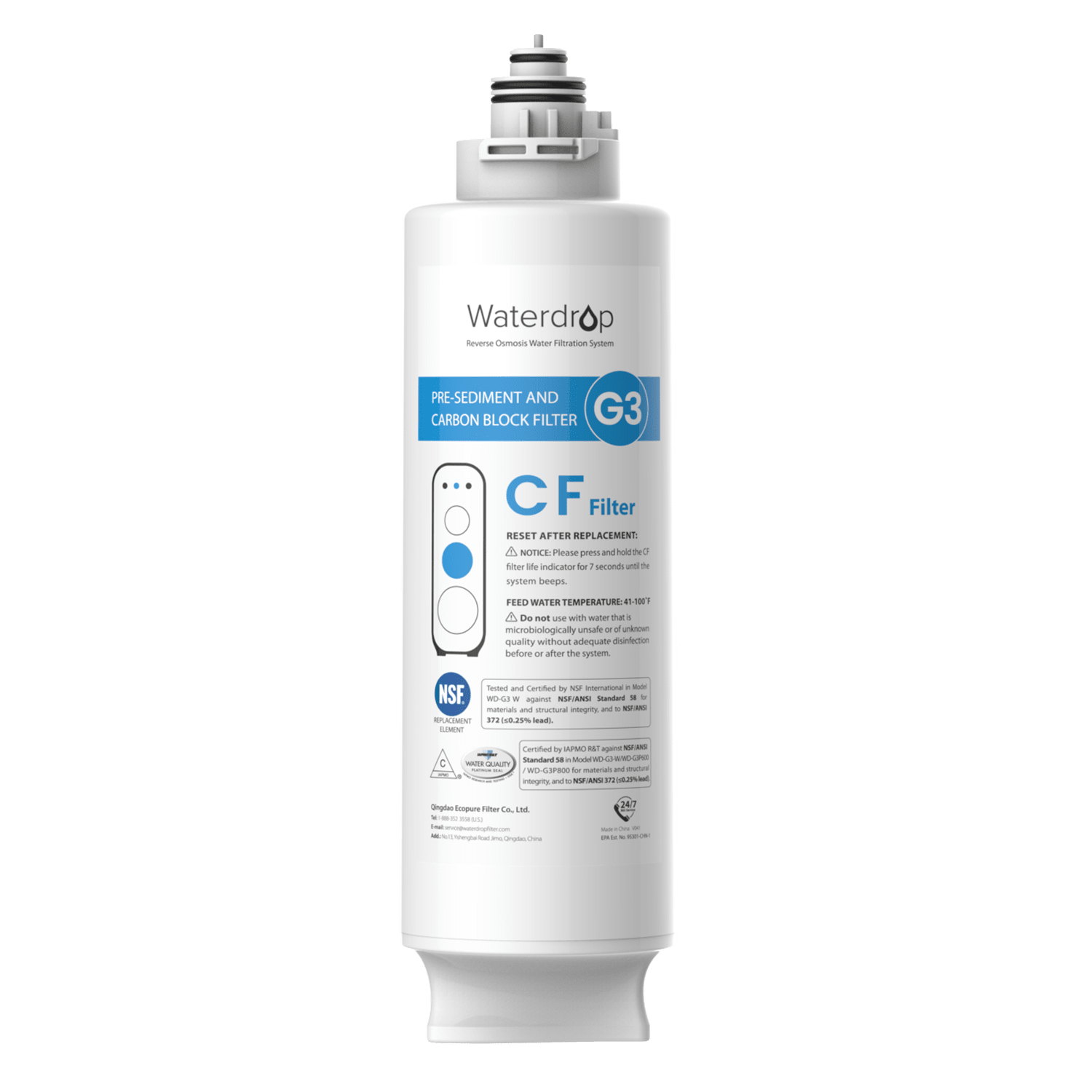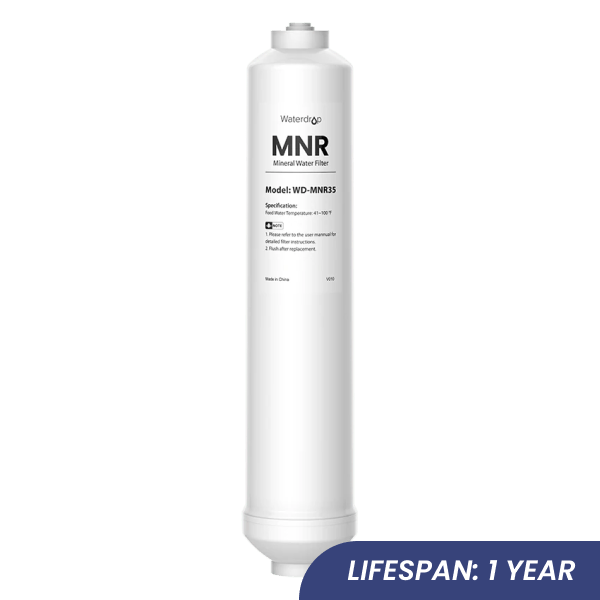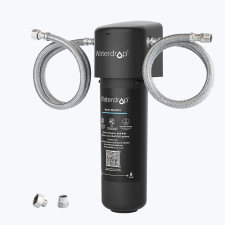How to Maintain Your Reverse Osmosis System?
por Dr. Jonathan Doyle - Updated December 10, 2024
Reverse Osmosis (RO) systems are a popular choice for many households due to their ability to provide clean, safe, and great-tasting water. These systems
are particularly valued for filtering out impurities like heavy metals, pesticides, and other contaminants. However, like any other water filtration system,
maintaining your RO system is essential for optimal performance and longevity.
This guide will talk about practical steps to maintain your reverse osmosis system effectively. By following these tips, you can ensure your system
functions at peak performance, providing you with high-quality water for years to come.
Why Is Maintenance Important for Your RO System?
Regular maintenance of
reverse osmosis system has the
following advantages.
- Ensures water quality. Clean filters and membranes improve water purity by effectively removing contaminants.
- Prolongs system life. Proper care reduces wear and tear on key components, saving you money in the long run.
- Prevents clogs and malfunctions. Dirty or overused filters can block water flow and reduce efficiency. Clean components improve water flow and filtration.
- Saves energy. A wellmaintained system uses less energy to process water to reduce utility bills and repair expenses.

Understanding the Components of Your RO System
To maintain your RO system effectively, it's crucial to understand its key parts.
- Sediment filter. Blocks dirt, rust, and larger particles.
- Carbon filter. Eliminates chlorine and organic compounds harmful to the RO membrane.
- Reverse osmosis membrane. Filters out microscopic contaminants like heavy metals and bacteria.
- Postcarbon filter. Enhances the taste and odor of purified water.
- Storage tank. Holds filtered water for easy access.
- Faucet. Dispenses purified water.
How to Maintain Your Reverse Osmosis System
RO systems require regular maintenance to operate at their best. These are some essential steps for maintaining your reverse osmosis system.

Replace Filters Regularly
Filters need periodic replacement to keep your system running efficiently.
- Sediment filter. Replace every months to prevent clogging and protect the RO membrane.
- Carbon filter. Replace every months to maintain chlorine removal efficiency.
- Postcarbon filter. Replace annually to ensure your water remains freshtasting.
Skipping replacements can lead to reduced filtration efficiency, lower water quality, and potential system damage.
Sanitize the System Annually
Sanitizing prevents bacterial buildup and keeps the system hygienic. If you're using an RO system with a tank, here are a few steps to follow.
- Turn off the water supply and empty the storage tank.
- Use a foodgrade sanitizer or a mixture of water and unscented bleach to clean the tank and tubing.
- Rinse thoroughly to remove any residual cleaning agents before restarting the system.

Check for Leaks
Leaks can compromise system performance and waste water. The following are things that need to be checked regularly.
- Connections and tubing for cracks or looseness.
- The faucet for drips.
- The storage tank for unusual signs of wear.
If you detect leaks, tighten connections or replace damaged parts.
Flush the System
Many RO systems include an automatic or manual flushing mechanism. Regular flushing helps to clean the membrane, improve system efficiency and extend the
lifespan of the filters and membrane.
Troubleshooting Common RO Issues
| Issue | Cause | Solution |
|---|---|---|
| Reduced water flow | Clogged filters or membrane | Replace filters or RO membrane. |
| Unpleasant water taste | Expired carbon filter | Replace the post-carbon filter. |
| Persistent leaks | Loose connections or tubing | Tighten fittings or replace tubing. |
| Noisy operation | Air trapped in the system | Flush the system and ensure connections are airtight. |
Environmental Considerations
Reverse osmosis systems produce wastewater during the filtration process. Here’s how you can align RO system maintenance with eco-friendly practices.
- Recycle wastewater. Use it for cleaning or gardening where appropriate.
- Dispose of filters responsibly. Check local guidelines for proper disposal or recycling of used filters.
- Choose highefficiency systems. Models like the Waterdrop X minimize wastewater production.

Upgrade Your System —— The Waterdrop X12 RO System
The 1200 GPD Tankless RO System delivers instant access to pure water with its impressive flow rate and advanced 11-stage filtration.
SGS tested and enhanced with LED assurance, effectively reduces TDS,
fluoride, and heavy metals, ensuring every drop is safe and healthy. Infused alkaline minerals like calcium and magnesium balance pH to an optimal 7.5±,
promoting wellness and enhancing flavor for drinking and cooking.
Designed for modern efficiency, the system includes a smart digital faucet with precise water output, real-time TDS monitoring, and filter life indicators.
Its tankless design saves space and supports eco-sustainability with an industry-leading 3:1 pure-to-drain ratio. Combined with a durable 24-month filter,
it offers long-term performance with minimal maintenance—perfect for families seeking health, convenience, and sustainability.
When to Call a Professional
While routine maintenance can often be done at home, some situations require professional help:
- Persistent low water pressure or leaks despite troubleshooting.
- Unusual noises from the system.
- Complex part replacements, such as the RO membrane.
Consult your manufacturer’s support team or hire a certified technician to ensure proper handling.
Final Words
Maintaining your reverse osmosis water system is not only crucial for enjoying clean and healthy water but also for maximizing the system’s efficiency and
lifespan. By following these maintenance tips—changing filters on time, sanitizing the system, and checking for leaks—you can ensure your RO system operates
optimally. Make regular upkeep a priority to enjoy the benefits of clean water while protecting the environment.
Thank You for Subscribing!
A 10% discount code has been sent to your email, and you also have a chance to win a new K19-H Countertop RO System. We will notify the winners via email.
Contaminants Detected in Fruitland Water Special Service District
30
Contaminants
EXCEED EWG HEALTH GUIDELINES
EXCEED EWG HEALTH GUIDELINES
30 Total Contaminants in Your Water
Water Provider
Fruitland Water Special Service DistrictPopulation Affected
120,000Water Source
Ground waterExceeds Guidelines
Others Detected














